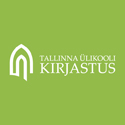Suundumustest eesti keele grammatiliste käänete kasutuses [Tendencies in the use of grammatical cases in Estonian]
Abstract
This paper discusses some of the tendencies in the use of grammatical cases in Estonian. The discussion is based on a comparison of the results obtained from two corpora, one of which comprises standard literary Estonian and the other the Estonian learner language. The main focus is on the object marking in the learner language. The results indicate two main tendencies in the Estonian learner language: on the one hand, the nominative form of the object NP seems to be preferred to the partitive and genitive case; on the other hand, the distribution of the genitive case is likely to become more limited, i.e. mainly associated with marking the possession. The preference for the nominative on the object NP may be caused by bleached semantics of certain core verbs as well as by variation in case marking with accomplishment and achievement verbs. The avoidance of the genitive case on the total object NP can be explained by analogy which learners seem to extend to instances where it is not appropriate, i.e. they tend to use nominative on the object of verbs which actually assign partitive case to its object (so called partitive verbs) and then appear to apply this pattern also to the marking of the total object. The use of nominative instead of the partitive may be due to the influence of the learners’ first language (Russian) in which one of the factors for differential object marking is animacy so that inanimate nouns with the same type of verbs are used in an unmarked, nominative form. It appears then that the rules for object marking are being simplified in the Estonian learner language and as a result it is the nominative form which is preferred. These tendencies in the object marking are only possible because the Estonian language shows internal development in the same direction, specifically the marginalization of the genitive as the object case. The function of the genitive is being taken over not by the partitive case as often claimed in the literature, but by the nominative form instead, since nominative is an unmarked form while partitive is the most marked one. Thus the developments in Estonian appear to be reflected in learner language too.
Keywords
the Estonian language, the object phrase, the use of grammatical cases
Full Text:
PDFRefbacks
- There are currently no refbacks.
Published by / Kirjastaja:

ISSN 2504-6616 (print/trükis)
ISSN 2504-6624 (online/võrguväljaanne)
